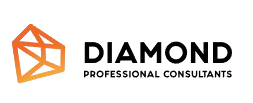Turning Data into Decisions: How HR Analytics Can Improve Your Talent Strategy
In today’s competitive business environment, talent is a critical differentiator. Organizations that can attract, retain, and develop top talent are more likely to succeed. But in a world of big data, how can you make sense of all the information you have about your employees?
This is where HR analytics comes in. HR analytics is the application of data analysis to human resource management practices. By using data to identify trends and patterns, HR professionals can gain valuable insights into their workforce. These insights can then be used to improve a variety of HR functions, such as recruitment, training, and performance management.
The Benefits of HR Analytics
There are many benefits to using HR analytics. Here are just a few:
- Improved decision-making: HR analytics can help you make data-driven decisions about your workforce. For example, you can use data to identify which recruitment channels are most effective, or which training programs are having the biggest impact on employee performance.
- Reduced costs: HR analytics can help you identify areas where you can save money. For example, you can use data to identify high-risk employees who are more likely to leave the company, or to target your training programs to the employees who need them most.
- Increased employee engagement: HR analytics can help you create a more positive work environment for your employees. For example, you can use data to identify employees who are at risk of burnout, or to track employee satisfaction levels over time.
- Improved compliance: HR analytics can help you ensure that you are complying with all applicable laws and regulations. For example, you can use data to track employee demographics and ensure that you are not discriminating against any group of employees.
How HR Analytics Can Be Used to Optimize Recruitment
Recruitment is one of the areas where HR analytics can have the biggest impact. By analyzing data on your past hires, you can identify the characteristics of successful employees. You can then use this information to target your recruitment efforts to attract more of the right candidates.
HR analytics can also be used to improve the efficiency of your recruitment process. For example, you can use data to identify which stages of the recruitment process are taking the longest, and then streamline those stages.
Here are some specific examples of how HR analytics can be used to optimize recruitment:
- Identify the most effective recruitment channels: By tracking where your best hires come from, you can focus your resources on the channels that are most likely to yield qualified candidates.
- Develop targeted job descriptions: By analyzing data on the skills and experience of your successful employees, you can develop job descriptions that are more likely to attract the right candidates.
- Improve your interview process: By using data to identify the most effective interview questions, you can ensure that you are selecting the best candidates for the job.
How HR Analytics Can Be Used to Predict Employee Turnover
Employee turnover is a costly problem for businesses. It can disrupt productivity, damage morale, and lead to lost knowledge and expertise. HR analytics can help you identify employees who are at risk of leaving the company. By understanding the factors that contribute to employee turnover, you can take steps to retain your top talent.
Here are some specific examples of how HR analytics can be used to predict employee turnover:
- Identify high-risk employees: By analyzing data on employee demographics, performance, and engagement, you can identify employees who are more likely to leave the company.
- Address the root causes of turnover: Once you know which employees are at risk of leaving, you can investigate the reasons why. This information can then be used to develop targeted interventions to address the root causes of turnover.
- Improve employee retention programs: By understanding what motivates your employees, you can develop retention programs that are more likely to be effective.
How HR Analytics Can Be Used to Improve Training Programs
Training is an essential investment for any organization. But how do you know if your training programs are actually effective? HR analytics can help you track the impact of your training programs on employee performance. This information can then be used to improve the design and delivery of your training programs.
Here are some specific examples of how HR analytics can be used to improve training programs:
- Identify the skills and knowledge gaps: By analyzing data on employee performance, you can identify the skills and knowledge gaps that need to be addressed through training.
- Develop targeted training programs: Once you know what skills and knowledge need to be developed, you can develop targeted training programs that address those needs.
- Track the impact of training: By tracking employee performance before and after training, you can measure the impact of your training programs. This information can then be used to improve the design and delivery of your training programs.




